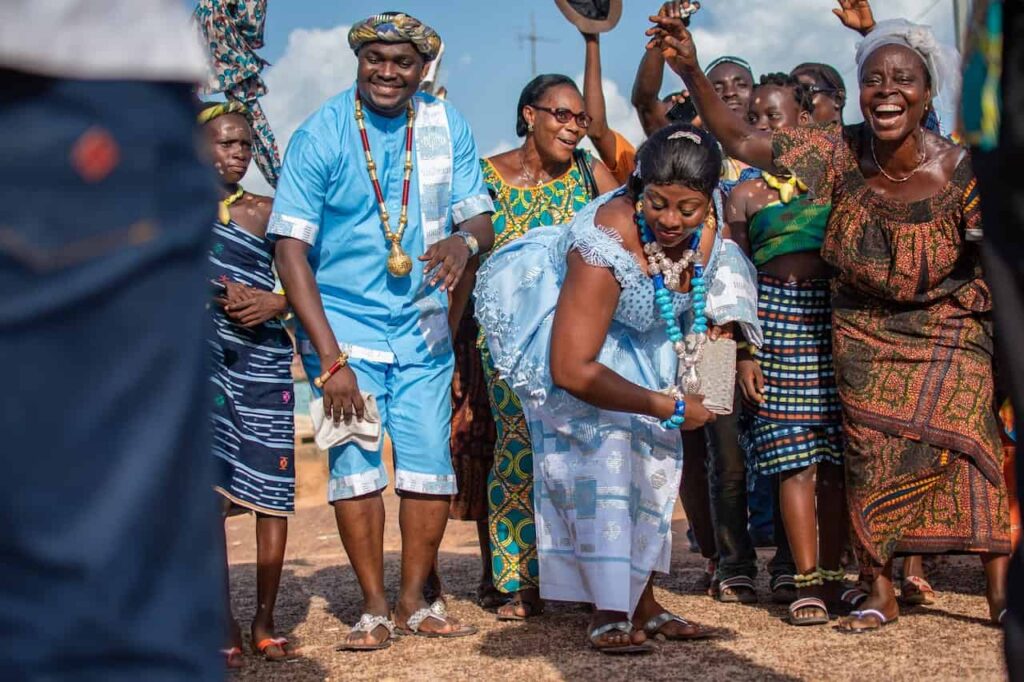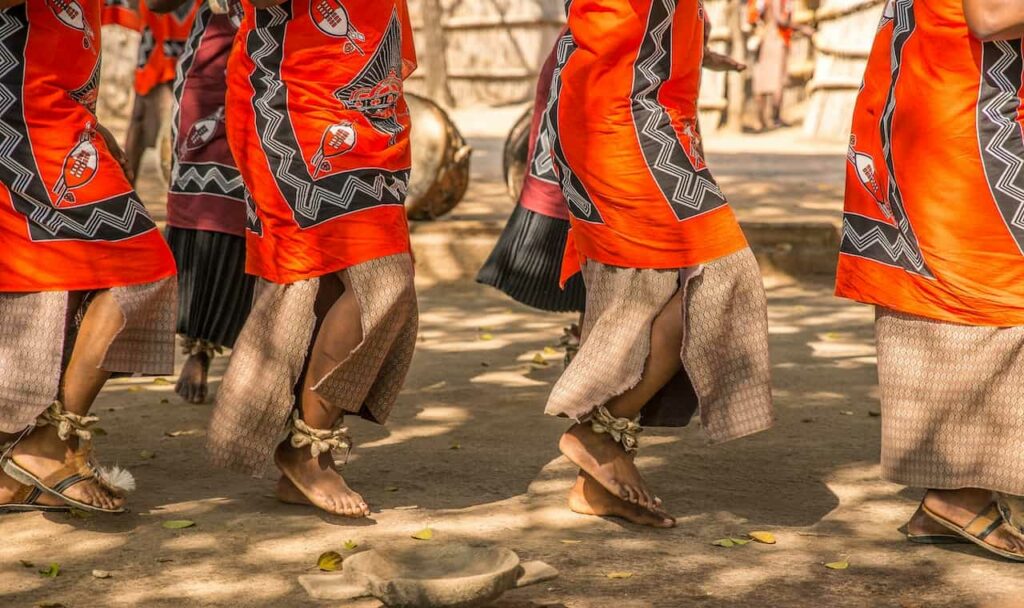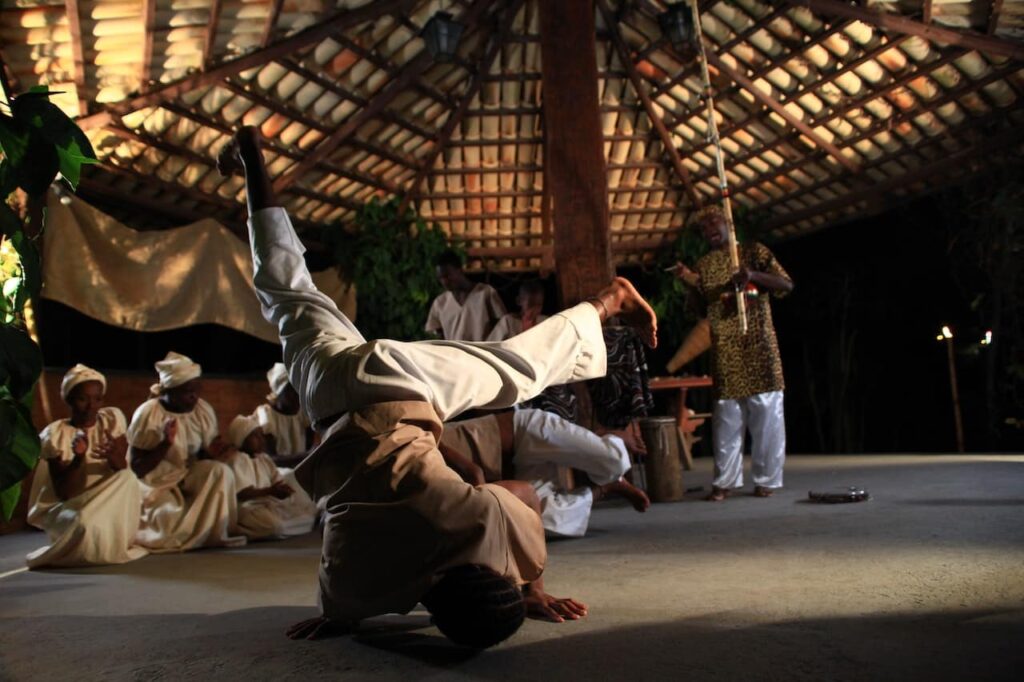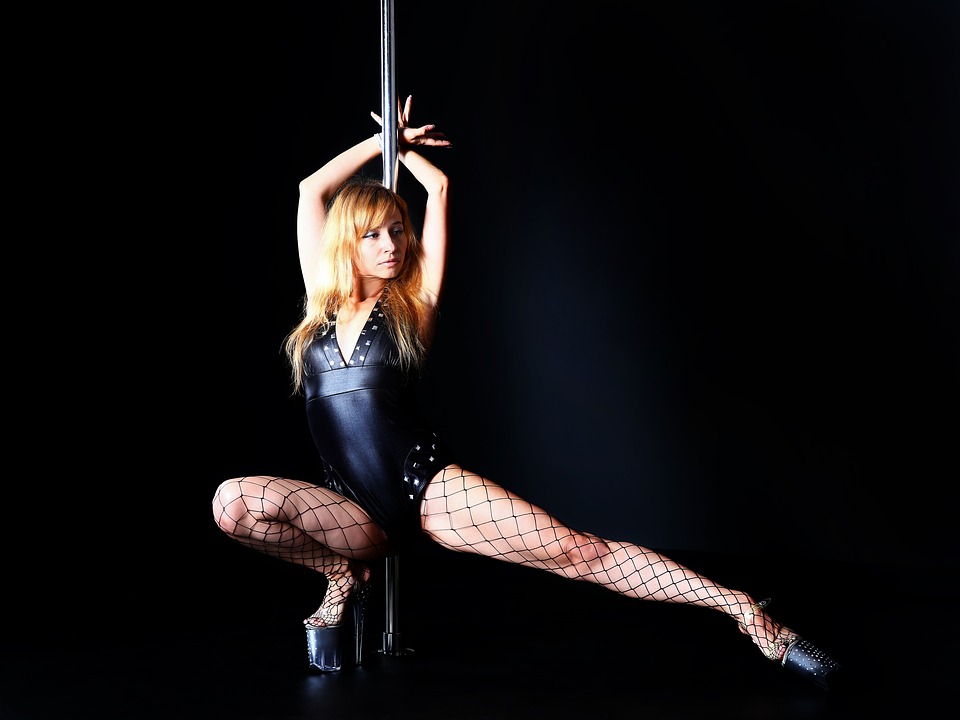
Summary
Welcome » Welcome » Guide to dance types » African dance features: African culture comes to life
African dance features: African culture comes to life
Are you looking to make a activity liberating, dynamic And catchy ? Turn towards the African dance characteristics. A mixture ofbody language and of technical own. It is a style of dance that leaves one place important to the'interpretation. Find out where she comes from, the particularities that make her charming and the styles that make up the African dance group.
Summary
The origin of African dance characteristics
African dance is a true art form in its own right. It is extremely physical since it involves all parts of the body. This style aims to reflect the way of life and the cultural diversity of the African continent. In this article, we will detail the specificities and existing forms of African dance.
Roots
African dance began several thousand years ago when the first African people discovered that they could speak out And communicate through gestures And movements. At that time, learning to dance was not democratizing. It was only used for important events such as weddings, births or funerals. Also, it was used to celebrate ancestors and the specters of nature.
Over time, African dance has developed under several variants. The first concerns the social dances which aim to create a solidarity social and give rise to a sharing between individuals belonging to the same group. These are dances that improvisation at the heart of the choreographies. The social side is easily identifiable since there are manyinteractions between dancers.
Social and sacred dances
Like social dances, there are sacred dances which are regulated and are passed down from generation to generation. Africans use these dances for celebrations defined such as rites, tributes or funerals by taking advantage of their legacy cultural.
Later, African dance became knowninfluence of foreign cultures. Notably European, Arab And American who all left their trace in this style of dance.
The 20th century was a real turning point for African dance. During this period, it was used to express there pride cultural African and the resistance against colonial domination.
Today, African dance is better known as “Afro dances” and is enjoying unprecedented popularity. Furthermore, she continues toevolve and to to diversify. Especially since nowadays there are modern dance trends such as hip-hop, jazz dance or contemporary dance. In the latter, African culture has become well established, more details in our article Contemporary dance.

African dance characteristics
African dance is distinguished from other types of dance by its unique characteristics.
Movements
The first particularity of African dance is the gesture. Indeed, African dance wants to be close to the ground. The knees are often bent and the pelvis is close to the ground. The desire to be close to the ground allows dancers to vary the rhythm of the gestures by opposing movements slow And jerky inspired by the house dance. This choice allows spectators to have a effect of surprise. In addition, dancers use movements fluids And rhythmic and positions which reference to the culture African to externalize emotions and tell stories. Moreover, to draw the public into these stories, there are movements of breakup, of dissociation and D'insulation. It is not uncommon to see a dancer doing polyrhythm, that is to say, have a different rhythm from one part of the body to another.
THE movements can be complex and are usually accompanied bytraditional instruments like the xylophone or the tom-tom. The music is a repetitive loop complete with singing, percussion and synchronized dance steps.
Challenges
African dance is the result of African values and traditions. Among them is the challenge. She's from elsewhere fundamental in this dance, his presence is made to encourage the dancers to exceed their boundaries physical and to execute of the movements impressive For to wow THE audience.
Furthermore, the challenge comes to life in many forms. The one who was made to be sensational translates into gestures always more acrobatic via pirouettes or jumps. The other form appears as a competition. This aims to measure the level of agility, creativity and flexibility. The challenge aims to dazzle the audience through increasingly complex movements to leave his opponent no chance.
However, theThe challenge can have a deeper impact. Indeed, he can symbolize Lpersistence, the difficulty of life or mental strength. In this sense, the challenge no longer has the dimension of competition but of a revaluation of self with the aim of overcome personal challenges.
Finally, the challenge can be used as a means of to strenghten there solidarity between dancers within a group. They are encouraged to support and encourage their colleagues to achieve a common goal.
Masks
Masks have a specific place in African culture and dance. They have one deep meaning since they represent spirits, mythical figures, ancestors, specters of nature or animals. Their use in African dance adds a spiritual and sacred dimension to the representation.
The mask is seen as a transformation accessory. By putting it on, the dancer can free from one's individual identity in order to connect to higher energies. The mask can also be a means of'play a character. In this case, the movements performed are directly inspired by the personality represented.
The last way to use a mask is forcollective expression. It's a way for dancers to gather and D'to honour their common history. In this sense, the mask symbolizes the'unit and the strength of the group for solidify the links which unite the dancers.
Why learn this dance?
Don't miss out on a rich and varied culture and history. Discover a dance from Sub-Saharan Africa mixing musical, oral and behavioral traditions involving religion and spiritual beliefs.
Improve your physical condition
African dance is a good way to maintain good physical condition. In fact, it offers cardiovascular exercises as well as energetic movements throughout the body. Your limbs are heavily used, so your heart rate increases, which improves your blood circulation. A regular practice will develop your Muscular force and your endurance.
Learn about African culture
African dance draws its sources from African culture. By practicing this dance, you can better understand African history and traditions. You will discover a new side of Africa with this dance since it is often used to tell legends and stories with movements significant to what is being told.
Connect with others
African dance is often practiced in groups which can help to create a connection with others and create a sense of belonging to a community. Can you support each other And you encourage has improve your techniques respective.
Being confident in one's self
It is also a way of develop your creativity. You can express your personality freely through movements and theimprovisation to take trust in you. If you're not comfortable with your body, you can become more confident by learning new gestures.
The different types of dance
There are dozens of African dance styles from North or West Africa. Today, we present to you 6 of them.
Cut-and-shift dance
The coupé-décalé dance comes straight from Ivory Coast. It is a dance often produced during parties or evenings. It responds to a desire for emancipation in the face of the harshness of life. The coupé-décalé is characterized by movements fast arms, hips and legs. For this style of dance, dancers move eccentrically, exaggerating hand and body gestures to follow the rhythm of the music.
Afrobeat dance
Before being a dance, afrobeat is a musical genre originating from Nigeria which has found its audience throughout Africa. The dance was inspired dance moves shaku shaku. The shaku shaku is composed of movements of feet with the hands stretched at the front, bringing them towards the ears. Afrobeat also took root with dance gwara gwara. It's simply a leg lift and swing that pulls the rest of your body into this movement. Afrobeat dance is the result of these two dances.
Soukous dance
The soukous dance comes from Congo. It is executed by complex arm gestures and rapid hip movements. It is a dance that requires great skill and good body coordination. It is generally done in a group to convey a feeling. This form of social dance is very joyful since the dancers regularly exchange glances and smiles, which creates an atmosphere of camaraderie.
Traditional African dances
This dance form is a mixture of several regions of Africa. It presents a strong energy, A significant ground ratio, of the fast or slow dance steps on the complex rhythms. This type of dance is often seen at large events like ceremonies or weddings.
African contemporary dance
Contemporary dance is a merger between the techniques of dance modern and the style traditional. THE movements are loose And fluids, very often there is a absence of choreography. This form essentially comes to life during festivals or artistic performances.
Gumboot dance
It is a particular dance that originated in South Africa. It consists of dancing with rubber boots to form a rhythm thanks to the sound produced. We only see it in cultural celebrations.

To conclude
We have reviewed the birth of African dance, its specificities, what it can bring you and its different styles. It is time to summarize the essentials of this discipline.
The birth of African dance dates back thousands of years and is deeply rooted in African traditions and culture. Since her birth, she has never stoppedevolve and of to diversify to tend to a art dynamic while keeping its African values and principles. There are two categories of dances. THE social dances to create a moment of sharing putting'improvisation at the heart of the choreographies. Then, the sacred dances are reserved for special events such as weddings, funerals and ceremonies and are choreographed.
Then, like any dance, African dance has its own features. The special attributes that can be remembered are as follows. African dance has a very close to the ground. THE movements dancers are very expressive playing on theslow opposition, fast And jerky who put at thehonor African culture as well as his stories. She also plays on the pace, there narration, L'improvisation and the masks For to transmit of the emotions and bring to life a experience unique to the spectators. Let's not forget the competitive dimension which is one of the unique aspects of this dance. The challenge is made for push the dancers to their limits so that they create movements surprising And increase their self-confidence. It can also be a expression of revolt in front of the daily difficulty.
Benefits
How will African dance be useful to you? For all these reasons :
Growing your culture
Create a link
Maintain the physique
Be selfconfident
Known dances
Coupé-décalé dance: the coupé-décalé dance is a festive dance often associated with nightlife and young people. The movements are lively and breathless with energetic movements of the legs and feet. The dancers do not hesitate to do acrobatics like somersaults or breakdance movements.
African contemporary dance: African contemporary dance is very varied. It can contain elements of traditional African dance as well as hip movements, rhythmic dance steps or percussion. All of this can be mixed with contemporary dance moves that add grace and fluidity. Moreover, it can very well be accompanied by classical music, jazz, traditional African music, electro or contemporary music.
Afrobeat dance: Afrobeat comes from a mixture of different musical styles such as soul or jazz. The movements are quick foot movements, twists, acrobatics, jumps and hip movements. They should reflect the melody and rhythm of the music. Afrobeat can be done in groups, which includes synchronized choreography compared to the solo style where the dancer is free to be creative and improvise.
Little popularized dances
Gumboot dance: dance practiced with one main element, rubber boots. It is percussive thanks to the sounds of the boots. A choreography is performed to this rhythm accompanied by singing.
Soukous dance: it is a social dance where the dancers move in groups on the floor. The hip movements are rapid and ample with rhythmic movements of the arms and legs sometimes with acrobatics and jumps which require great agility.
Traditional African dance: It is performed for celebrations and special occasions. The movements are vigorous and confident with the aim of expressing emotion. Some stunts can be done like jumps, hip swings or pivots. Accessories can accompany the dancers such as fabrics or fans. Traditional instruments such as drums or flutes are used as well as songs.
Go on a dancing adventure with DECIBEL®
Do you want to start with the basics of dance before launching into characteristic African dance? It is possible at DECIBEL ®.
Associate dance with workout during sessions of 45 minutes. Bring out your best dance moves to choreographies of cardio and of reinforcement muscular rhythmic on the games of lights.
Strengthen your abs and your glutes on the floor dancing so uninhibited on the playlists composed of Beyoncé, Drake or Daft Punk. You can trust our motivated coaches to help you progress at your own pace without judgment.
Join DECIBEL ® to dance to your heart's content and perhaps take the plunge into African dance.
Read also
follow us
on instagram
Follow our news,
take advantage of our tutorials and participate to our
contests!
BREAKING NEWS!
Receive our newsletter.






